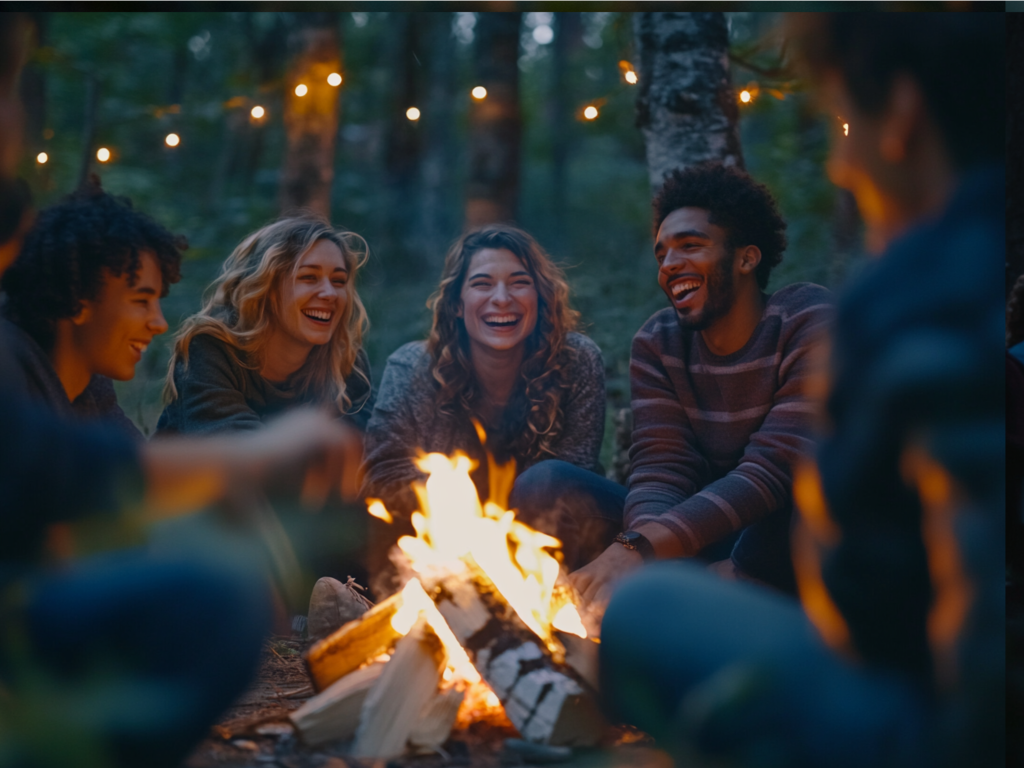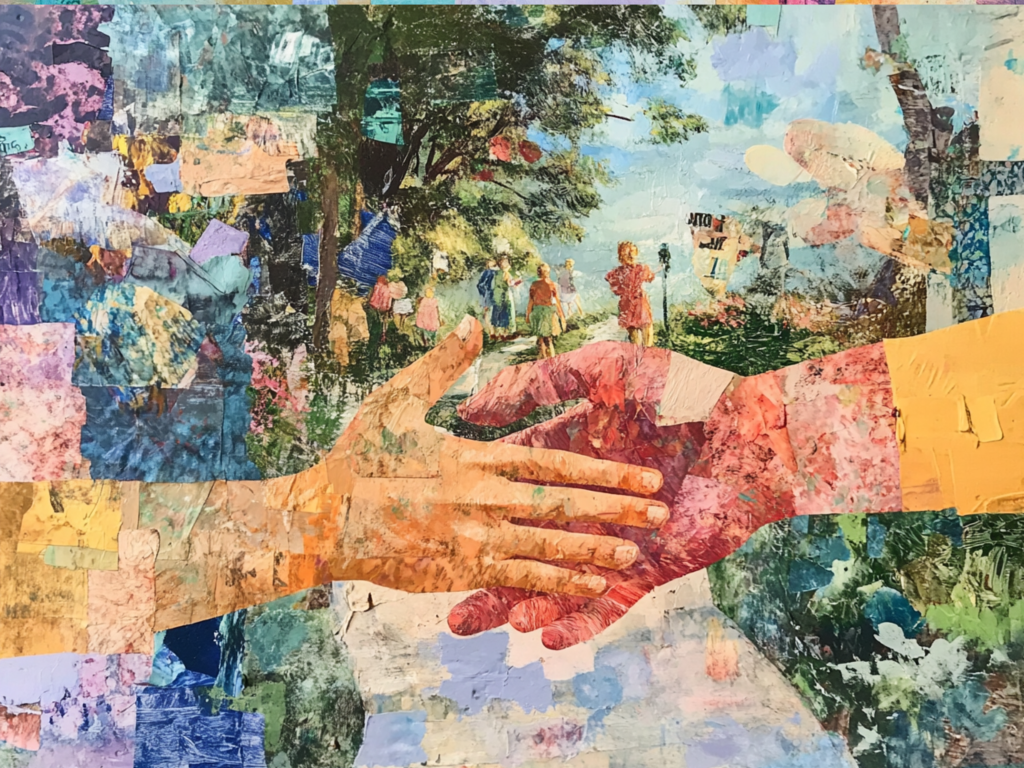How to Manifest Friends: Practical Tips for Building Meaningful Connections
Making friends might seem difficult for some, but it’s entirely possible to attract good people into your life. Visualizing the kind of friends you want is a powerful first step. Imagine the qualities, interests, and values they have. This mental picture sets a clear intention for the universe.
Action is just as important as vision. Attend social gatherings, join clubs, or engage in hobbies where you can meet like-minded people. When you actively put yourself out there, you increase your chances of finding friends who match your vision.
It’s also crucial to be the kind of friend you want to attract. Show kindness, listen, and be genuine in your interactions. By embodying the qualities you desire in others, you draw similar people towards you. These simple steps can turn your desire for friendship into reality.

Understanding Manifestation
Manifestation is the practice of bringing something into reality through thought, belief, and focused energy. When used correctly, this technique can foster meaningful friendships by attracting people who align with one’s values and desires.
Principles of Manifestation
Manifestation starts with clear intentions. It’s important to know exactly what one wants. Visualization plays a key role. By imagining the desired outcome vividly, a person sends strong signals out into the universe. Belief in the possibility of the outcome is equally important. Without genuine belief, the effort may fall flat.
Emotional alignment is critical. Feeling happy and excited about the goals can amplify their attainment. Consistency in practicing these techniques daily strengthens the manifestation process.
Manifestation and Friendships
Manifestation can help build friendships by focusing on the qualities one desires in friends. Making a list of traits like kindness, loyalty, and humor can guide one’s intent. Visualization of spending time with such friends can make these scenarios more likely.
Believing valued friendships are possible opens doors to meeting new people. Practicing this with a positive mindset can attract those who resonate on the same frequency. Taking inspired actions, like joining clubs or social groups, can also facilitate meeting potential friends.
Preparing to Manifest
Before trying to manifest friends, it’s important to understand how one’s mindset affects success.
Start by recognizing negative thoughts. Replace them with positive, affirming beliefs. For example, if you often think, “I am not social enough,” change that to “I am friendly and approachable.”
Next, visualize the kind of friendships you want. Take a few minutes every day to imagine being around supportive and fun friends. Seeing it in your mind can help make it feel more real.
List your strengths and qualities. Writing down what makes you a good friend can boost self-confidence. Are you a good listener? Do you have a great sense of humor? Focus on these traits.
Create a vision board. Gather images, words, or symbols that represent the friendships you want. This can keep you motivated and focused.
Practice gratitude daily. Reflect on the positive relationships you already have, even if they are not yet close friendships. This will increase positive energy.
They might want to set specific goals. Instead of just wanting friends, decide on clear intentions. For instance, “I want to meet two new people this month.”
Affirmations can help. Repeat statements like, “I am open to new friendships” and “I attract positive people”. Say these daily to reinforce your intentions.
Lastly, stay open to opportunities. Sometimes, new friends come from unexpected places. Be open to talking to new people, joining groups, or trying new activities.
Preparing well sets the stage for successful manifesting.

Manifestation Techniques
These techniques can help you attract friends by using your thoughts, words, and actions. Practicing these can change your mindset and create opportunities.
Visualization
Visualization involves imagining yourself with new friends and enjoying activities together. Think of detailed scenarios – maybe you’re laughing at a joke or sharing a meal. This practice helps build a clear image of what you want.
Creating a vision board can enhance this experience. Use images that represent friendship, such as pictures of people having fun. Spend a few minutes every day focusing on these images.
Consistency is key. Visualize daily to keep your goal fresh in your mind. It can help shift your mindset towards being more open and positive about making friends.
Affirmations
Affirmations are positive statements that reinforce your goals. They work by changing your thought patterns. Examples include, “I am a friendly person,” or “I attract positive and kind people.”
Write these down and say them out loud every morning. Repetition helps ingrain these positive beliefs.
Keep your affirmations short and specific. Repeat them at least twice a day. The more you use them, the more they influence your mindset and actions towards attracting friends.
Scripting
Scripting involves writing detailed stories about you and your future friends. Describe events and interactions as if they are happening now. It’s like creating a personal storybook.
Use the present tense to make it feel more real. For instance, “I am having a great time with my new friends at the park.”
Writing regularly in a journal can make this technique more effective. It helps reinforce the belief that you’re already living that life, making it easier to attract new friends.
Acting ‘As If’
Acting “as if” means behaving like you already have the friends you desire. This can change your attitude and energy, attracting people to you.
Dress well, smile, and be approachable. Engage in activities where you’re likely to meet new people. This not only reinforces your belief but also puts you in environments where you can find friends.
Being proactive is essential. Attend social events, join clubs, and participate in community activities. Acting “as if” helps bridge the gap between wanting friends and actually making them.
![]()
Building Social Connections
Forming friendships involves meeting new people and strengthening the bonds with those you already know. Developing these connections requires effort and sincerity.
Expanding Your Social Circle
Meeting new people is key to broadening your social network. Join clubs or groups that match your interests, whether it’s sports, hobbies, or community service. Participating in different activities offers many chances to interact with others and make new friends.
Volunteering is another way to meet people who share your values. Look for local organizations and take part in events or projects. This can be useful for building strong, meaningful relationships.
Using social media can also help expand your social circle. Join online groups and participate in discussions. It allows you to connect with many people who share similar interests.
Deepening Connections
Once you have met new people, it’s important to deepen these relationships. Regular communication is vital. Send messages, make phone calls, or plan meet-ups to stay in touch.
Showing genuine interest in others’ lives helps strengthen bonds. Ask questions about their interests, listen actively, and provide support when needed. This creates trust and mutual respect.
Quality time spent together is essential. Plan activities, whether it’s a lunch, a movie night, or a hike. Shared experiences help to build closer connections and create lasting memories.
Offering help and being dependable also deepens connections. Be there during difficult times and celebrate successes together. This reliability fosters strong and lasting friendships.
Taking Action
Making new friends requires being proactive and taking steps to connect with others. Here are ways to find and seize opportunities.
Social Opportunities
Attend social gatherings like parties or meetups. Say hello to others and introduce yourself. Bring a friend if you’re shy.
Join clubs or groups with interests like sports, books, or gaming. Being part of a group makes it easier to talk to people. Regular events can help form lasting friendships.
Online Platforms
Use social media and apps to find people with similar hobbies. Platforms like Facebook, Reddit, or Meetup have groups for almost every interest.
Participate in discussions or comment on posts. Engaging online can lead to in-person meetings or video chats. Make sure to stay safe and protect your privacy.
Community Events
Check out local events such as fairs, concerts, or workshops. Look at community boards or websites for listings. These events are great for meeting new people in your area.
Volunteer for causes you care about. Working together on a common goal can help build strong connections. Dress appropriately for the event and show genuine interest in those you meet.

Maintaining New Friendships
Building a lasting friendship requires effort. Key elements include staying in touch regularly, offering support during good and bad times, and finding common activities to enjoy together.
Consistent Communication
Regular communication is crucial. Friends should text, call, or meet up often to keep the bond strong. They shouldn’t let too much time pass without checking in. Small gestures like sending a funny meme or asking about each other’s day can go a long way.
Mutual Support
Being there for each other is important. Friends should offer emotional support and help with practical needs. This includes listening, sharing advice, and celebrating successes. It’s also about being present during tough times, showing empathy and understanding.
Shared Interests
Engaging in activities that both friends enjoy strengthens the bond. Whether it’s sports, hobbies, or other interests, doing things together creates shared experiences. Finding common ground keeps the friendship dynamic and fun. Sharing passions makes interactions more meaningful.
Personal Growth
Personal growth involves continual self-improvement and embracing change. These habits can help in forming stronger, more meaningful friendships.
Continual Self-Improvement
Self-improvement means working on skills and traits that make someone a better person. This can include setting personal goals, learning new things, and seeking feedback from others. Improving oneself makes one more attractive as a friend because it shows a commitment to growth.
Joining a club or taking up a hobby provides opportunities for skill-building and socializing. It’s also important to be aware of strengths and weaknesses. This awareness helps in relationships because it allows for better communication and understanding. Self-improvement is a journey, and every small step counts.
Examples of self-improvement activities include:
- Reading books
- Taking courses
- Practicing mindfulness
Embracing Change
Embracing change means being open to new experiences and flexible in thinking. Change can be challenging, but it is essential for growth. It can help someone meet new people and form new friendships.
Ways to embrace change:
- Trying new activities
- Volunteering
- Traveling to different places
Change often brings uncertainty, but it also brings new opportunities. When someone embraces change, they become more adaptable and resilient. This can make it easier to connect with others and build lasting friendships. Accepting change is a key part of personal growth and can lead to richer social experiences.

